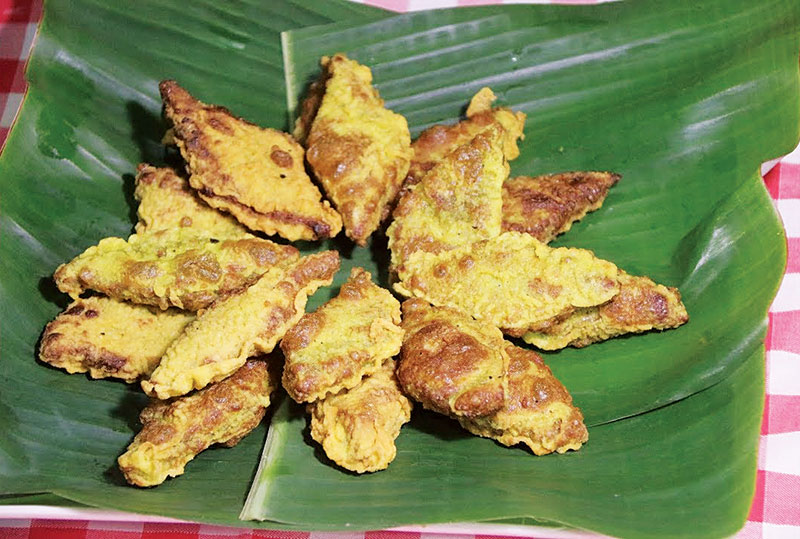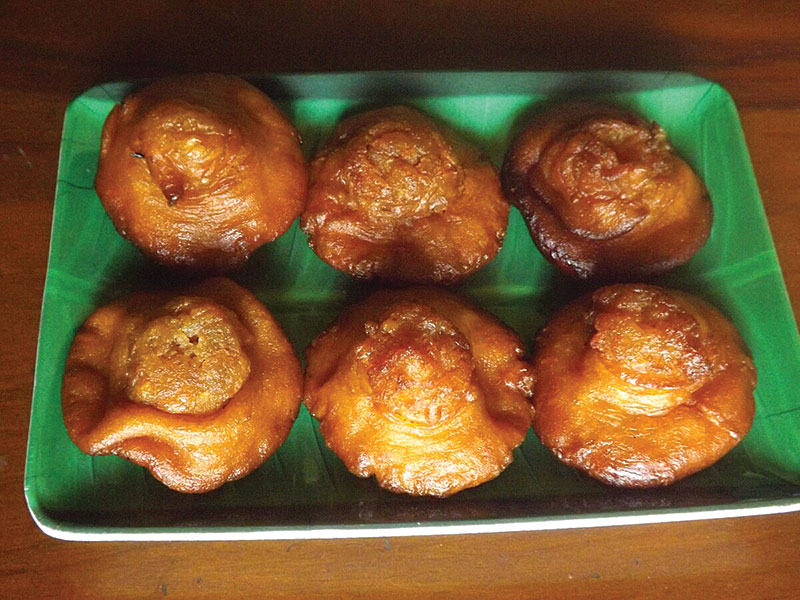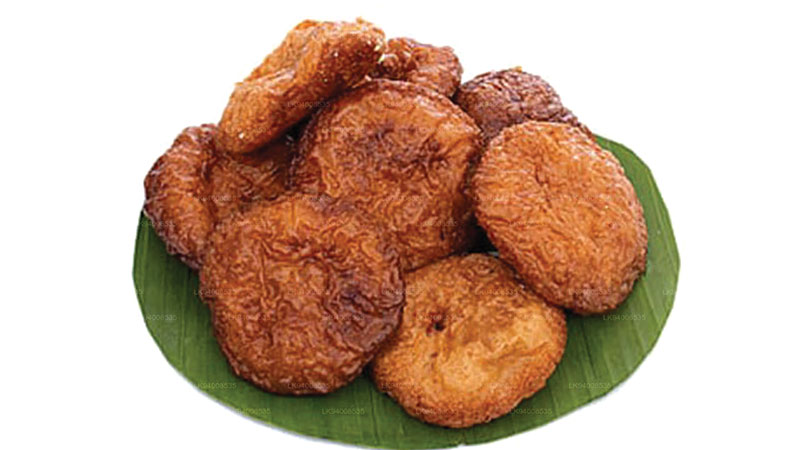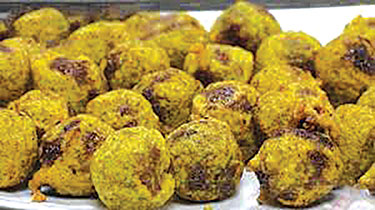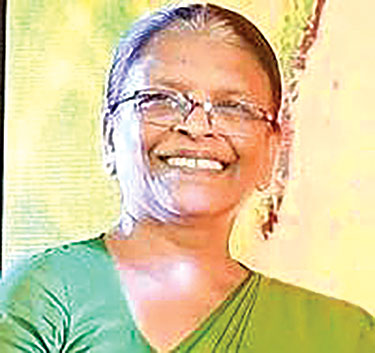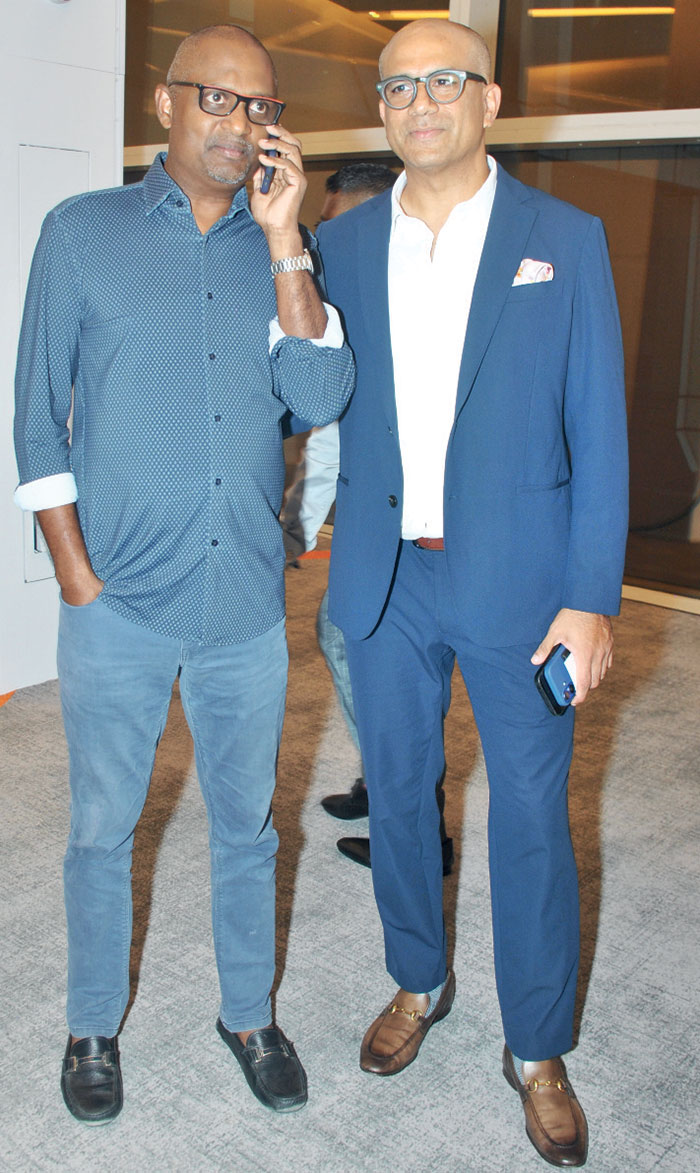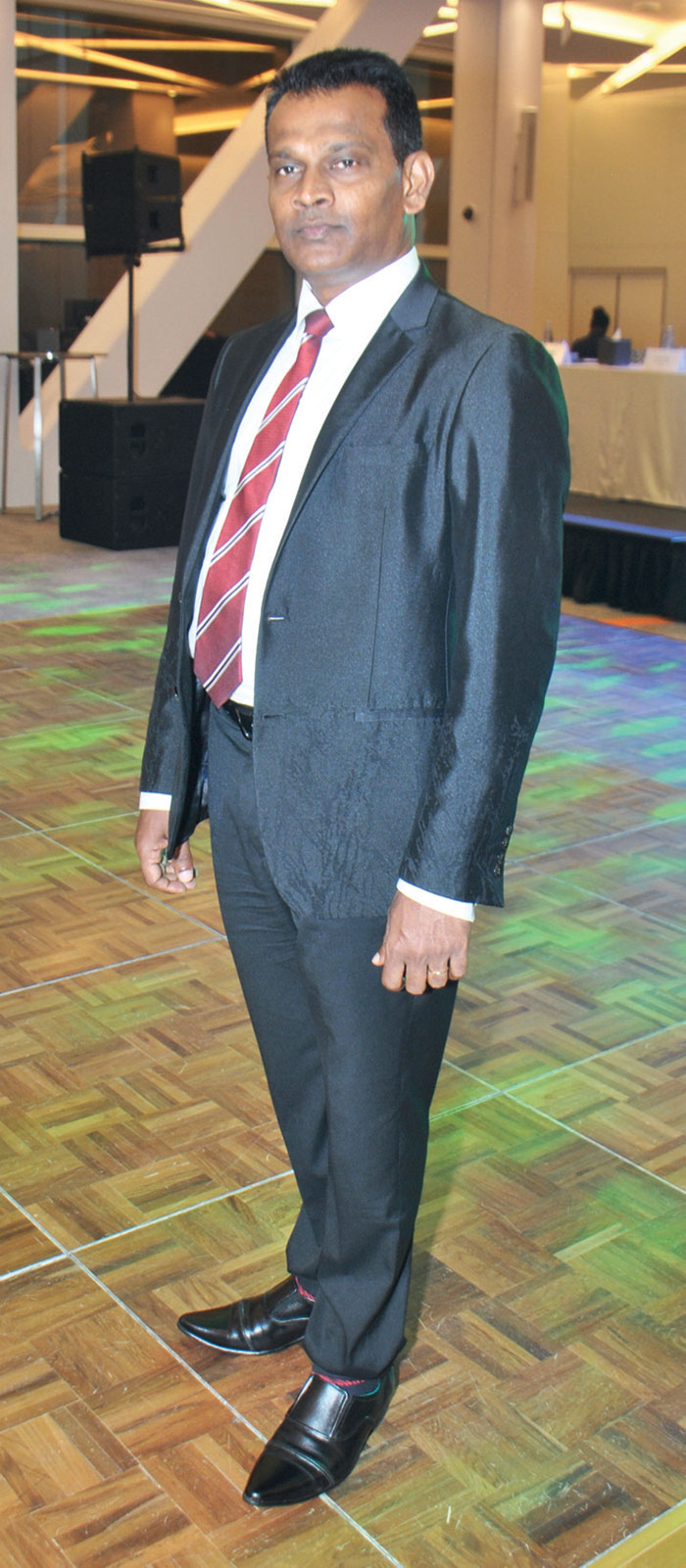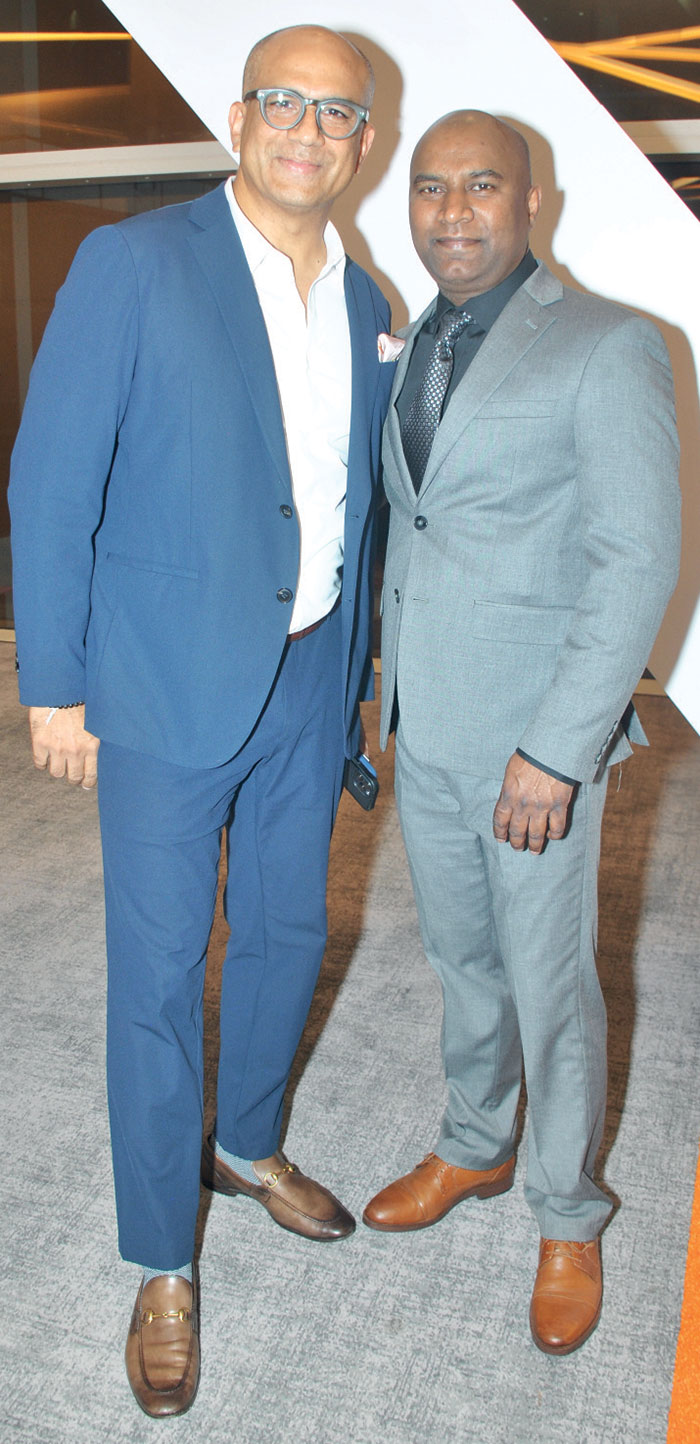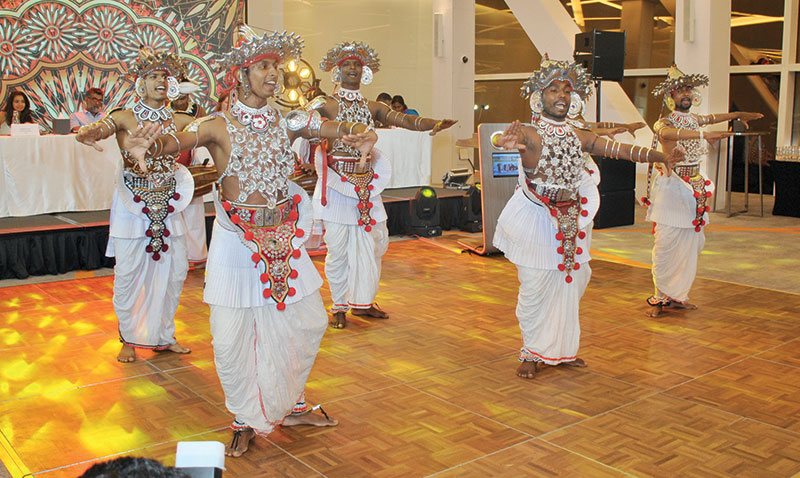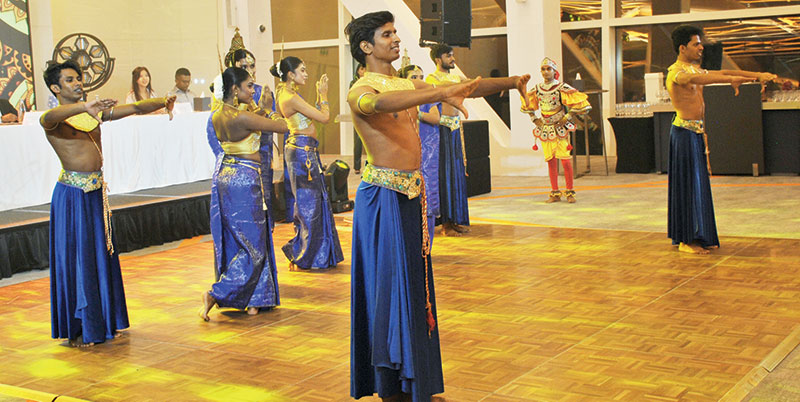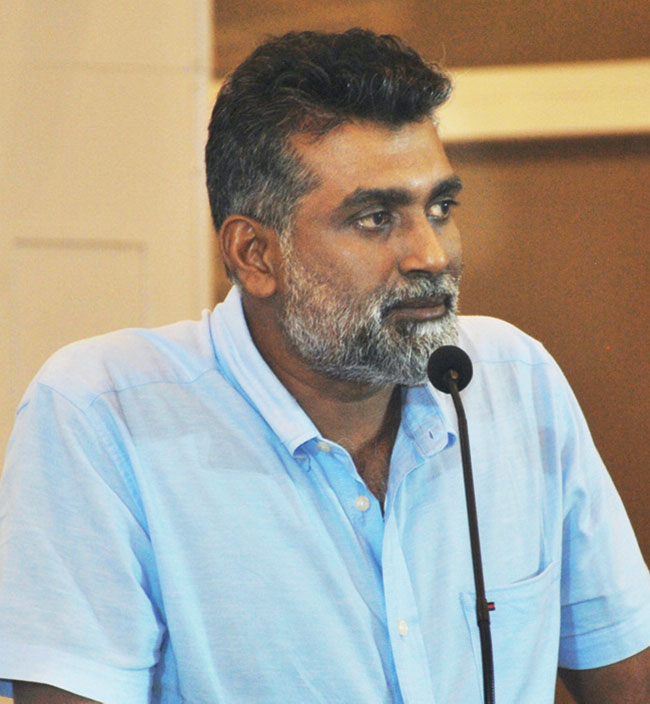Life style
Women’s International Day Gender equality and opportunities for women in Turkey
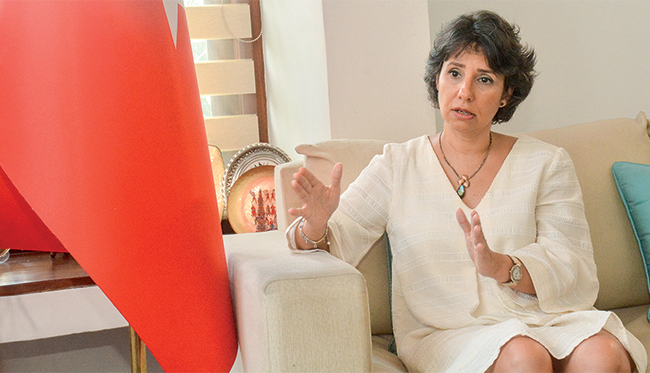
Demet Sekercioglu, Ambassador of the Republic of Turkey to Sri Lanka and Maldives is a role model to women. She is beautiful elegant and graceful, and demonstrates an inner strength that resonate with the celebration of all women on International Women’s Day. Her affinity to diplomatic service was probably influenced by her father who himself was a diplomatAmbassador was born in 1969 in Bonn/Germany. She graduated from the Department of Economics of the Faculty of Political Sciences, Ankara University in 1995. After joining the Ministry of Foreign Affairs of Turkey in 1995, she assumed duties at the Turkish Embassy in Rabat, Brussels, Kuwait and Islamabad as well as at the Turkish General Consulate in Lyon throughout her professional career. She served in the Directorate General of Consular Affairs, Europe and lately South Asia at the Ministry of Foreign Affairs of Turkey.
strength that resonate with the celebration of all women on International Women’s Day. Her affinity to diplomatic service was probably influenced by her father who himself was a diplomatAmbassador was born in 1969 in Bonn/Germany. She graduated from the Department of Economics of the Faculty of Political Sciences, Ankara University in 1995. After joining the Ministry of Foreign Affairs of Turkey in 1995, she assumed duties at the Turkish Embassy in Rabat, Brussels, Kuwait and Islamabad as well as at the Turkish General Consulate in Lyon throughout her professional career. She served in the Directorate General of Consular Affairs, Europe and lately South Asia at the Ministry of Foreign Affairs of Turkey.
I consider March 8th, International Women’s Day as an opportunity for a global observance to recognize the social, economic, cultural, and political achievements of women and the progress made in advancing gender equality around the world. However, it is also a day for acknowledging the work that still needs to be done to ensure that women are treated fairly and have equal opportunities in all aspects of life.
International Women’s Day is a reminder that gender equality is not only a women’s issue but a human rights issue that affects us all. It provides an opportunity to raise awareness about the challenges that women face and to promote greater gender parity and inclusivity in our communities, workplaces, and societies.
Role of women in Türkey?
Turkey has a long history for promoting equal opportunities for both men and women. From early on, Mustafa Kemal Atatürk, the founder of our nation, recognized the importance of women in the development of a society. With the establishment of the Republic, Turkish women were bestowed with several political rights including the right to vote and be elected in municipal elections in 1930, the right to elect and be elected as a Mukhtar in 1933, and finally the right to vote and be elected in general elections in 1934. Notably, these rights were granted well ahead of many European countries.
Women inTurkey have legal rights to education, employment, and political participation. Although the majority of the Turkish people are Muslims, it is worth mentioning that Sharia Law is not applicable in Turkey Every Turkish citizen, regardless of gender and belief, is required to abide by the same laws. Secularism is enshrined in the Constitution of the Republic of Turkey. Furthermore, women are also protected by laws against gender-based violence and discrimination.
Turkish women are present in every aspect of life and have made notable contributions to the country’s economy, politics, and culture. Turkey’s labour force, particularly in the service sector and in small and medium-sized businesses. Women also hold positions of power in government, business, and civil society organizations, although their representation in these areas still lags behind that of men. They are massively present in academia.
Overall, while Turkish women have made progress in advancing their rights and opportunities, there is still work to be done to ensure full gender equality and address the challenges that they continue to face.
Are women fully represented in Turkish Parliament?
While there have been significant strides toward greater representation of women in the Grand National Assembly of Turkey (GNAT), it is difficult to say that women are yet fully represented in the National Assembly.
As of the most recent general election in 2018, women held 17.3% of the seats in the GNAT, with 103 women out of 600 members. This was an increase from the 14.7% of seats held by women after the previous general election in 2015.
Traditional gender roles and cultural attitudes toward women’s political participation are the main factors that contribute to the underrepresentation of women in the National Assembly. However, efforts are underway to increase women’s representation in politics in Turkey, including the implementation of gender quotas for political parties and the development of programs to support women’s political participation.
Women’s rights and gender equality in Turkey in comparison to other countries comment?
The response to your question will depend on the angle from which you approach the issue. Which countries do you compare Turkey with? Even more: which sector do you compare?
In comparison to many countries in her region, Turkey is much more advanced in terms of gender equality. According to the European Commission’s “She Figures 2021” report comparing the state of gender equality in research and innovation, Turkey is also ahead of some European countries in some fields. For example, the proportion of women among doctoral graduates is 46.9% in Turkey and 48.1% in the EU-27, while the ratio is lower in some European countries. While the proportion of self-employed women scientists, engineers, and ICT professionals is 21.86% in Turkey 24.87% in the EU-27, the proportion of women researchers is 37.03% in Turkey and 32.83% in the EU-27, and the proportion of women among heads of institutions in the higher education sector is much higher in Turkey at 28.0% when compared to 23.6% in the EU-27 and other European countries.
However, we have to recognize that there are still significant barriers that limit opportunities for women, including traditional gender roles, cultural attitudes towards women, and unequal access to resources and opportunities. Therefore, Turkey continues to implement a number of laws and policies aimed at improving women’s rights and promoting gender equality.
Obviously, there is a direct correlation between the economic independence of women and their social and political status.In terms of economic empowerment, women in Turkey are increasingly entering the labour force and participating in entrepreneurship. Women have also made strides in education, with an increasing number of women pursuing higher education.
Progress has also been made in terms of political empowerment, particularly in their representation in local government. However, women are still underrepresented in national politics. As I expressed earlier, women only hold 17.3% of seats in the Grand National Assembly.
Although progress was made towards the economic and political empowerment of women thanks to legal and policy reforms aimed at promoting gender equality, increased access to education and training, and the efforts of women’s rights organizations and activists, barriers still exist due to cultural attitudes towards women’s roles and limited access to resources and opportunities.
Violence against women is it rampant in Turkey?
It appears that progress in advancing women’s rights goes hand in hand with the economic and social development of countries. As such, Turkey efforts towards sustainable development, eradicating poverty, and increasing support for marginalized and disadvantaged sections of society, including women and girls, reflect considerable progress in advancing women’s rights over the last 15 years.
Turkey has made important legal and policy reforms and built a solid legal framework to prevent and respond to violence against women and girls. Four national action plans and specialized initiatives, including the emergency support mobile phone app have been put in place.
However, it has to be recognized that although women live in different geographies and conditions, they are exposed to almost similar forms of violence. Violence against women is not only a problem of our time, it existed in the past and is likely to remain in the future.
Therefore, apart from the economic empowerment of women, I also consider it paramount that girls and boys are educated on gender equality from a young age, and that this education begins within the family. In this regard, mothers have a great role to play in the education of boys, in particular.
Gender equality and Women’s empowerment in Turkey comment?
Despite being among the first women in Europe and the region to achieve the right to vote and run for parliamentarian seats and having a strong legal framework as well as many policies for the economic and political empowerment of women, there is still work to be done to address the systemic barriers and cultural attitudes that limit gender equality.
Beginning by educating the minds of both girls and boys at their younger ages seems like the most effective way to tackle the issue. Have you faced any barriers in your career due to being a woman? If so how did you overcome them?
In Turkey one of the institutions that caters the training of top female bureaucrats is the Ministry of Foreign Affairs of the Republic of Turkey , of which I am proud to be a member. A diplomat is regarded as a diplomat and there is no such thing as a man or woman diplomat. Moreover, there is no distinction based on gender, difficult/easy geography, or post-harrowing circumstances when Ministry members are appointed abroad. Similarly there is no salary difference between male and female diplomats. Primary criteria is the ability to do our duties in the country we are deployed to. This uniformity is also evident when looking at the countries I have previously served and the topics I was in charge while I was at the headquarters.
It is noteworthy to mention that Foreign Minister H.E. Mevlüt Çavuşoğlu considerably supports women diplomats to reach higher positions in the Ministry. There has been a notable increase in the number of female Ambassadors and Consul Generals abroad and Deputy Director Generals and Director Generals at the headquarter during his term as the Foreign Minister.
Unfortunately on the other side, there are certain individuals who are still against seeing women rising to greater positions in any society, whether they do it covertly or out in the open. I see education as a powerful tool and one thing that must be prioritized if this mentality is to vanish.
Finally, it should also be noted that the appointment of my distinguished colleague Ambassador Hasanthi Dissanayake to Ankara and my own appointment to Colombo both demonstrates the value placed on women in both countries.
Your stay in Sri Lanka. What do you like most in Sri Lanka?
Since taking office as the Ambassador of the Republic of Turkey o Sri Lanka at the beginning of 2020, I have been unable to explore the beauty of Sri Lanka as much as I would have loved to, due to the COVID-19 pandemic and the difficult times that Sri Lanka faced last year.
However, those factors did not restrict me from enjoying the parks and green spaces in the city of Colombo, which is one thing that I like the most about Sri Lanka. Even though Colombo is a very small city compared to other capitals and economic centres in the world, the city has well preserved its natural charm with lush landscapes in the midst of busy corporate spaces.
One thing I like in particular are the beautiful residential spaces in Colombo, especially around Colombo 7, where there are houses built with beautiful gardens, which is also very rare to see in other urban landscapes in the world.
Apart from her beauty, the hospitality of the Sri Lankan people is second to none. The warm and friendly nature of the people, as well as their always smiling faces, top my list of things I like best about Sri Lanka.
Sri Lanka Turkish relations comment?
We have close relations in the political, economic, and people-to-people spheres. The government to government ties between our two countries have also been very cordial. Turkey and Sri Lanka have consistently supported each other in international fora and candidatures thanks to our excellent diplomatic relations dating back to 1868.
As far as our economic relations are concerned, the trade volume between the two countries stands at around USD 200 million, with enough potential to grow. I am pleased to see that Turkish business people, after three years of absence, are again exploring opportunities in Sri Lanka. Daily flights of our national flag carrier Turkish Airlines (THY) since 2013 are a great advantage to enhance our people-to-people ties and facilitate trade.
Turkey and Sri Lanka have stood by each other during their critical times and shown solidarity when in need. During the COVID-19 pandemic, there has been one of the few airlines to continue to fly to Sri Lanka and has contributed to the Sri Lankan economy by transporting its export goods to the world market.
The visit of President Recep Tayyip Erdoğan, then Prime Minister of Turkey, to Sri Lanka in the aftermath of the 2005 Tsunami was a significant moment in our bilateral relations as it provided an opportunity to stand by the Sri Lankan people.
Our friendly relations were also evident during the recent devastating earthquakes in Turkey The government of Sri Lanka immediately expressed its solidarity and handed out a consignment of Ceylon tea to help the victims alleviate harsh winter conditions. Friendly people of Sri Lanka also came forward and made cash as well as in-kind donations to support victims of earthquakes. We are grateful for the material and moral support of the Sri Lankan government and people.
2023 marks the 75th anniversary of the independence of Sri Lanka, the centennial of the foundation of the Republic of Turkey , the 75th anniversary of the recognition of the independence of Sri Lanka by Turkey and the tenth anniversary of the opening of the Embassy of the Republic of Turkey in Colombo. We are looking forward to further strengthening our relations with Sri Lanka, which we consider a valuable friend and a reliable partner.
Life style
Kevum – Befitting a King
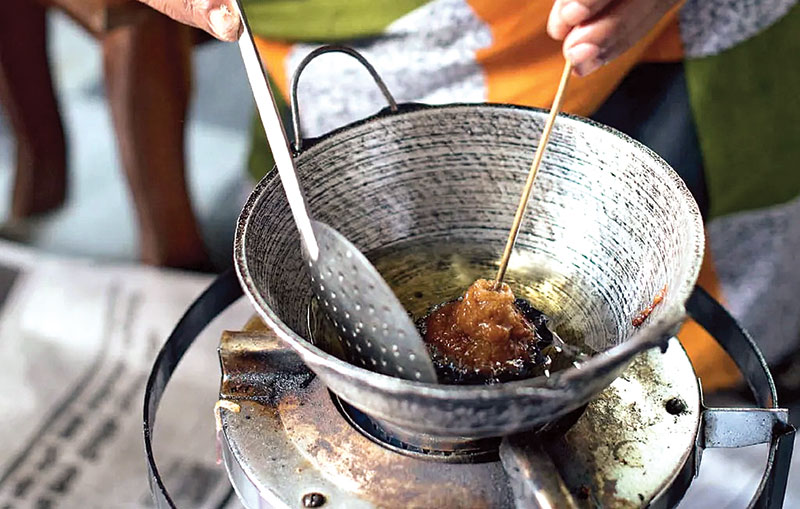
The avurudu table of any Lankan home is complete only when it is laden with kevum. Dating back to ancient times, many types of kevum are chronicled even in our classical texts. The Dutch rulers of the island are said to have relished them, some even asking if they grew on trees… A delicacy which was offered to visiting dignitaries, kevum was revered by our kings even in the battle field not only as an energy-booster but also as a wound disinfectant.
BY RANDIMA ATTYGALLE
The culmination of Avurudu preparations in my childhood with my grandparents was marked by the ritual of Kevum-making. Athamma would ‘book in advance’ the kevum specialist Soida Hami (Soida aachchi to us children), and install a special hearth in her back verendah for the grand moment. I would watch Soida aachchi in wonderment as her thick batter of rice flour and best of kithul treacle shaping into kevums in a hot wok of coconut oil. The long kevum koora in her nimble fingers would achieve the feat of the perfect konde. It was almost a rite of reverence, so much so I was not supposed to talk to her until the first batch of Konda-kevums was completed. Like many old-folk of her vintage, Soida aachchi believed that talking while the first few kevums are done would result in a flawed product.
She would then place each perfect Konda kevuma on a banana leaf for the excess oil to drain. Once the whole exercise was completed, she would place Konda-kevum in large earthen pots and store them in the dum messa or the storage area above the main hearth of the kitchen. She would spare me only one kevuma and the rest had to wait until the auspicious time on avurudu day!
Travellers’ records
Robert Knox an English sailor who was held in captive in the court of the Kandyan King Rajasinghe II and one of the prolific chroniclers of ancient Ceylon in his famous work, An Historical relation of the Island Ceylon documents on the sweet meats of Lankans with a special account of kevum.
‘They have several sorts of sweet-meats. One they call Caown. It is like to a fritter made of Rice-flower and Jaggory. They make them up in little lumps and lay them upon a leaf, and then press them with their thumbs and put them into a frying-pan and fry them in Coker-nut Oyl or Butter. When the Dutch came first to Columba, the King ordered these Caown to be made and sent to them as a royal treat. And they say, the Dutch did so admire them, that they asked if they grew not upon trees, supposing it past the Art of man to make such dainties.’ (Spelling as in the original Knox)
The account of Knox enables rich insights into this wonder of a sweet meat which enthralled many a traveller to the island including dignitaries. The European trader Cosmas who visited Ceylon in 545-550 AD, documents that along with gems, Kevum and Kalu dodol from Ceylon were taken to the Roman court of Emperor Claudius during the sixth century.
- Mun kevum
- Konda kevum
- Athirasa
Classical literature
Kevum dates back to ancient times and our classical texts such as the Ummagga jatakaya, Pujawaliya and Saddharma Ratanawaliya bear evidence to this fact. “Originally known as poopa this sweet meat came to be known as kevum in the Dambadeniya-Kurunegala era. Jathaka atuwa getapadaya mentions 18 kinds of sweet-meats found in the ancient Sri Lanka and among them are several types of kevum such as sendi kevum, mal kevum, athirasa, pena kevum, raa-kevum,” says Prof. Kusumalatha Lankamulla from the Department of Sinhala and Mass Communication at the University of Sri Jayewardenepura.
This scholar with research interest in Culture, Traditional and Modern Literature goes onto note that Mahawamsa in its 32nd chapter refers to two types of kevum in the context of alms offered by King Dutugemunu. The two types- thel kevum and maha de kuvum mentioned, were fried in ghee. “Many of our classical texts mention kevum in multiple festive contexts beyond avurudu. In Ummagga jathakaya, kevum is mentioned as a fitting gift to be taken when visiting parents. Saddharma Ratanawaliya refers to boxes of kevum or kevum pesa.“
An energy booster
Among the popular kevum types found today are Konda kevum, athirasa, mun-kevum, naran kevum and hendi-kevum. Although the ingredients used for each type may slightly differ, rice flour and treacle (now largely replaced with sugar) remain common to all. The much sought after Konda kevum which is relatively a later addition to the range of kevum found here at home is believed to have originated during the Kandyan period says Prof. Lankamulla. “During the Kandyan period, men were prohibited from cutting their hair off and they had to tie it in form of a knot on top of their heads. Konda kevuma is believed to have been inspired by this practice.”
Traditionally, Sinhalese soldiers were given a bag of kevum when going to war. History has it that King Dutugemunu went a step ahead and used kevum to treat wounded soldiers. His army used to prepare kevum months in advance and keep them exposed to air so that the mould can grow on them.
This mould in today’s language had ‘antibiotic properties’ and was used on the wounds of the soldiers to prevent them from festering. “In a bid to undermine the pride of place given to kevum as a super food by the locals, the British coined the famous derogatory adage: ‘Sinhalaya is a fool but is an ace at eating kevum’. (Sinhalaya modaya-kevum kanna yodaya)
Steeped in tradition
Superstitious beliefs surrounding the process of kevum-making are not uncommon and these vary from region to region in the island, says Prof. Lankamulla. Regardless of the region, several common traditions were followed by our ancestors and these still continue to be observed in several parts of the country, she says. “The frying pan with coconut oil to prepare the kevum was kept on fire at an auspicious time and village matriarchs who were highly skilled were mobilized for the occasion. Women also believed that they must refrain from talking when the first kevum is being made. For centuries, the first kevum was considered to be the ‘konduru kevum’, dedicated to the sledge-fly or the konduruwa. The village women would hang the first kevum up for the insects so that the rest would be unspoilt.”
With the passage of time, many Lankans, particularly city-dwellers depend on commercially available avurudu kevili including kevum. Although kevum is synonymous with avurudu, today people get to enjoy it round the year thanks to many sweet meat kiosks found in cities. Although these outlets have best sales during avurudu, they get plenty of orders from Lankans travelling abroad or coming home for vacation at other times of the year as well.
One such die-hard kevum fan is Uthpala Ranatunga from Ottawa, Canada. “My Loku amma (oldest aunt) makes it a point to pack me a parcel of best quality Konda kevum to take with me whenever I’m in Sri Lanka for a vacation.
I deep-freeze them for longer use and eat them sparingly,” says Uthpala to whom kevum is always a strong reminder of home. “Each time I indulge in them I feel nostalgic and miss home.”
Kevum is an integral part of the Lankan culture, finding its way from ancient classical literature to that of the contemporary including children’s literature and arts. The much-loved sweet meat is celebrated in the work of Sybil Wettasinghe – the iconic story teller and illustrator.
Come avurudu, we often hear the intonation of Lionel Ranwala, the eminent musician, vocalist and an authority on Sri Lankan folk music, whose tribute to the enduring legacy of this delicacy is one of the best in our times:
Me avurudu kale -sinaha weyan rale
Thel ihirunu kewum gediya wage…
Fashion
Festive glamour at Nethara

Nethara Collection ,is a world of export quality garments in Diulpitiya, Boralesgamuwa, is infused with an ultra festive spirit this season catering to the women of today. Unbelievable offers and discounts from Nethara for Sinhala anTamil new year. On selection of women’s clothing, ranges from casual options to formal occasion wear,all at friendly prices,to enhance your wardrobe this festive season.
Nethara collection, started small in 2017, but soon it outgrew, today with an ever increasing customer base, branded and non branded clothing this shopping centre has become very popular. Export quality , stylish dresses, crop tops, fancy blouses, trousers and many more to flaunt yourself and enhance your wardrobe.Their extensive collection, maintain low pricing allowing everybody to have a chance to shop till they drop dead. From casual wear to formal wear,they have women to men’s items like tee shirts, shirts for every occasion.
Nethara clothing has long remained a name that has struck a chord with Sri Lankan shoppers. “We believe our success has been based up on the premise that absolute sincerity towards customers and no matter what the economic situation that prevails, we try our level best to keep our prices low and within everybody’s budget, said managing director, Nethara Collection Sampath Kumara.
This April season Nethara collection brings an all new collection of export quality seasonal wear. Celebrate the season with exclusive offers made just for you! Dresses, blouses, casual, formal wear denim, men’s shirts and many more… world of limitless style and joy!
This festive season Nethara unwraps a celebration of warmth, style and sophistication. Immense yourself in a vibrant festive atmosphere as you explore thier collection under one roof 345 Boralasgamuwa With a focus on quality, affordability and customer satisfaction, Nethara export quality boutique invites you to celebrate the Sinhala and Tamil New Year in style.
(Zanita)
Life style
Sri Lanka tourism unveils strategic vision
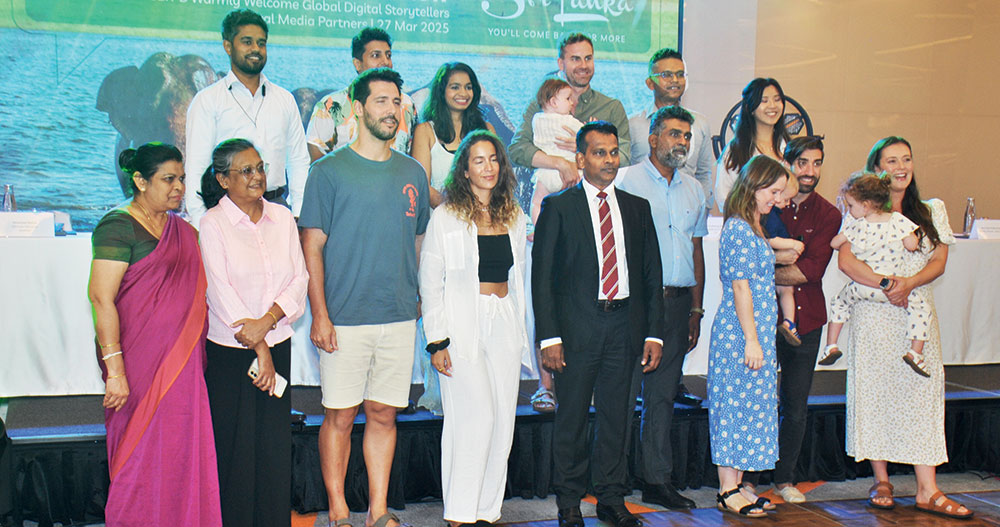
Sri Lanka Tourism Bureau hosted a landmark event at cinnamon Life for an ambitious campaign to spotlight Sri Lanka as a top travel destination. This initiative hosted international influencers and local media to capture the unique charm of Sri Lanka’s destinations. These travel influencers will share thier real time content across platforms like Instragrams Tik Tok and youtube amplifying Sr Lanka as a must visit destination. Many media personal, bloggers and influencers participated in this event which will take them on a tourism travel featuring some of Sri Lanka’s top destination.
Sri Lanka Tourism Promotion Bureau (SLTPB) hosted a landmark event at the Cinnamon Life Hotel, Colombo. The event was led by . Deputy Minister of Tourism, Prof. Ruwan Ranasinghe, with the participation of SLTPB Chairman Buddika Hewawasam, officials, travel influencers and their families, as well as journalists specializing in tourism sector reporting. The gathering set the stage for transformative initiatives aimed at bolstering Sri Lanka’s tourism sector and redefining its global image.
In his opening remarks, Buddika Hewawasam underscored the challenges facing the tourism sector, particularly the seasonal dip in arrivals during the summer months. “The next few years will be the most challenging period for all of us,” Hewawasam stated, emphasizing the need for international collaboration and strategic development. He further highlighted the critical role played by international travel influencers and media professionals in raising awareness of Sri Lanka’s hospitality and inspiring tourists worldwide to visit.
- Dileep Mudadeniya
- Deputy Minister of TourismProfess or Dr Ruwan Ranasinghe
- Guests
The Deputy Minister of Tourism, Prof. Ruwan Ranasinghe, detailed the innovative nature of the campaign and its importance in showcasing Sri Lanka’s rich heritage, natural beauty, and diverse travel experiences to mainstream and emerging tourism markets.
During the event, several prominent travel influencers shared their thoughts about Sri Lanka’s uniqueness as a destination. They highlighted that Sri Lanka is a country where travellers don’t need to worry about finding incredible experiences—nature has already done the hard work. The influencers remarked on Sri Lanka’s unparalleled diversity, noting that it is possible to experience a range of climates within just a few hours by travelling to different parts of the island. From sun-soaked beaches to misty highlands, and from lush forests to cultural treasures, Sri Lanka offers a world of adventures in a compact and accessible setting.
In comparison to destinations like Bali, which some influencers noted as overcrowded, Sri Lanka stands out with stable and balanced tourism activities. The event attendees were thrilled by the country’s warm hospitality, authentic DDirector cuisine with an impressive variety, long history, and rich culture. These qualities make Sri Lanka not only inviting but genuinely unforgettable for visitors.
The travel influencers in attendance expressed strong confidence in their ability to share this powerful message with the world. They were determined to shape international travel trends by showcasing Sri Lanka’s unique appeal, while also helping to attract new types of guests. The influencers represented a diverse range of travel segments, including family travellers, solo female travellers, honeymooners, and adventure seekers. Their efforts were supported by Sri Lanka Tourism officials and journalists representing both local and international media agencies.
The ‘Sri Lanka, A Story for Every Season’ campaign represents SLTPB’s first large-scale effort to boost summer travel through digital storytelling and influencer collaboration.
Featuring a curated destination familiarization tour, the campaign will spotlight wildlife safaris, cultural heritage, spiritual pilgrimage sites, scenic landscapes, and adventure tourism. Influencers will produce high-impact content for platforms like Instagram, YouTube, and Facebook, reaching over 2.2 million travel enthusiasts globally.
Sri Lanka Tourism shared impressive winter peak season results, with international arrivals reaching 665,295 by March 23, 2025—a marked increase compared to the previous year. These figures illustrate the sector’s potential for growth, and the campaign aims to sustain momentum throughout the summer months.
The event was a call to action for stakeholders to unite in elevating Sri Lanka’s global tourism appeal. With plans to generate over LKR 32 million worth of media coverage and connect with diverse travel segments, the campaign underscores Sri Lanka’s commitment to redefining itself as a leading destination for year-round travel.
By Zanita Careem
Pix by Darmasena Welipitiya
-

 Business5 days ago
Business5 days agoColombo Coffee wins coveted management awards
-

 Features6 days ago
Features6 days agoStarlink in the Global South
-
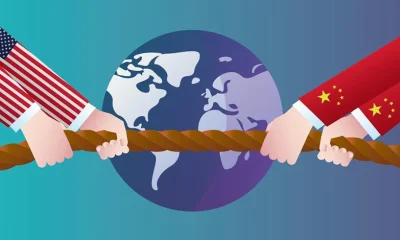
 Features3 days ago
Features3 days agoSri Lanka’s Foreign Policy amid Geopolitical Transformations: 1990-2024 – Part III
-
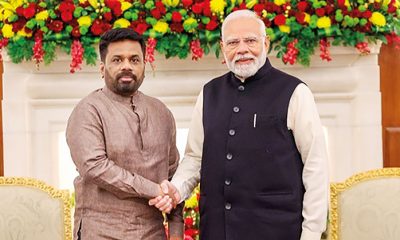
 Features6 days ago
Features6 days agoModi’s Sri Lanka Sojourn
-

 Midweek Review3 days ago
Midweek Review3 days agoInequality is killing the Middle Class
-
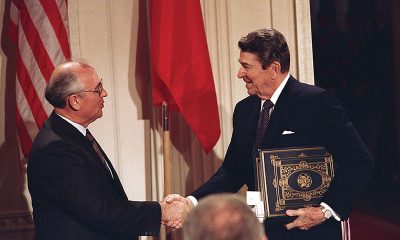
 Features5 days ago
Features5 days agoSri Lanka’s Foreign Policy amid Geopolitical Transformations: 1990-2024 – Part I
-

 Features4 days ago
Features4 days agoA brighter future …
-
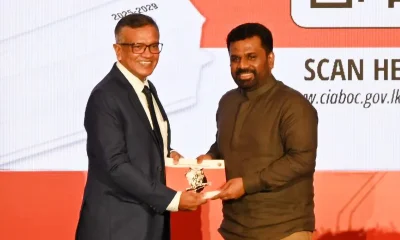
 Business2 days ago
Business2 days agoNational Anti-Corruption Action Plan launched with focus on economic recovery


